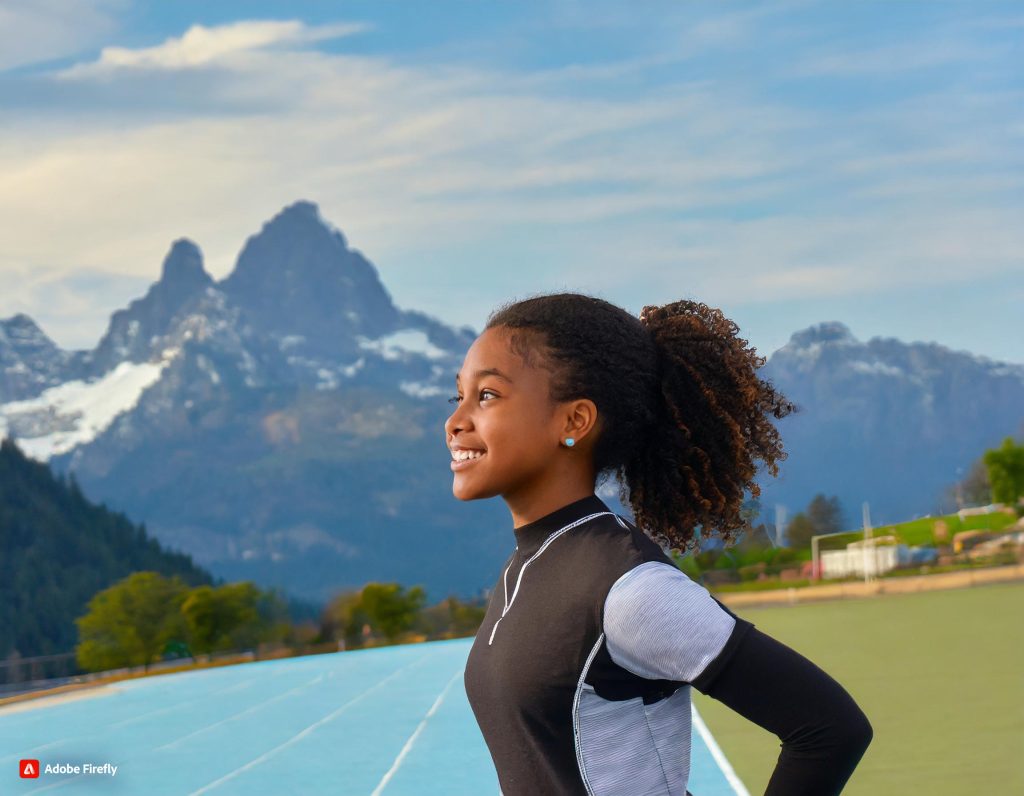Introduction
Youth athletic improvement is a vital aspect of nurturing the next generation of athletes. As more kids interact in sports activities, knowledge of how to develop their abilities, power, and typical physical literacy is important. This article explores the principles of young people’s athletic improvement, emphasizing the significance of a holistic technique that balances bodily, psychological, and social elements.
The Importance of Early Development
Starting athletic schooling at a young age can appreciably impact an athlete’s future performance. The early years are crucial for growing foundational movement capabilities, coordination, and physical literacy. Research indicates that kids who take part in diverse bodily activities before the age of 12 are more likely to excel in sports activities later in life. This period is often referred to as the “essential window” for motor ability development, where children can collect fundamental movement patterns, including going for walks, leaping, throwing, and catching.
Physical Literacy
Physical literacy refers to the potential, self-belief, and choice to be lively. It isn’t always simply about athletic abilities; it includes a large variety of bodily activities and movements. Programs that target developing bodily literacy in youngsters can help instill a lifelong love of interest and decrease dropout rates in sports. Coaches and mother and father have to prioritize exposure to diverse sports and activities, permitting kids to discover their pursuits and abilities.
The Role of Coaches and Trainers
Qualified coaches and running shoes play a pivotal role in children’s athletic improvement. Their expertise can make a full-size distinction in how younger athletes progress. Coaches have to be well-versed in age-suitable training strategies and damage prevention strategies. An excellent instructor will focus on ability improvement, making sure that practices are engaging and academic instead of, in basic terms, aggressive.
Creating a Positive Environment
Creating a fine and inclusive environment is crucial for young people’s development. Coaches need to inspire teamwork, resilience, and private growth, fostering an environment where young athletes feel safe to take risks and make errors. Emphasizing effort over triumphing can help youngsters develop a boom mindset that’s important for long-term success.
Physical Development: Age-Appropriate Training
Training regimens for adolescents and athletes need to be tailored to their age, bodily adulthood, and personal skills. It is vital to understand that kids aren’t miniature adults; their bodies and minds are nevertheless growing. Here are a few age-suitable training pointers:
Ages 6–10: Fundamental Skills
At this degree, the point of interest must be in developing essential motion capabilities and coordination. Activities must be fun and varied, consisting of games that promote agility, balance, and coordination. The purpose is to build a sturdy foundation of physical literacy without overemphasizing opposition.
Ages 11–14: Introduction of Specific Skills
As kids reach pre-childhood, they can begin to specialize, particularly in sports activities. Training can introduce game-unique talents while continuing to emphasise usual bodily fitness. Coaches must encompass strength training in a safe manner, specializing in frame-weight physical games and resistance bands to promote energy without risking injury.
Ages 15 and Up: Advanced Training Techniques
In adolescence, athletes can cope with extra-excessive schooling classes, which could encompass more precise skill drills and energy training with weights. This level is essential for making athletes ready for aggressive sports activities; however, it’s critical to preserve stability to keep away from burnout and injury. Incorporating flexibility and restoration techniques becomes increasingly critical as education depth increases.
Psychological Development: Building Resilience
The psychological aspect of children’s athletic improvement is just as crucial as the bodily aspect. Young athletes face numerous pressures, from performance expectations to peer comparisons. It’s vital to foster intellectual resilience and coping techniques.
The Role of Parents and Guardians
Parents and guardians play an important role in shaping an athlete’s mindset. Encouraging a healthy angle on opposition and emphasizing attempt and development can help mitigate pressure. Open verbal exchange about feelings, pressure, and expectations can create a supportive environment that nurtures mental well-being.
Goal Setting and Self-Regulation
Teaching young athletes a way to set sensible goals and expand their own abilities can enhance their overall performance and personal growth. Coaches should guide athletes in developing quick-time and lengthy-time dreams that specialize in manner-oriented objectives instead of entirely on results. This technique promotes perseverance and a sense of achievement.
Social Development: Building Teamwork and Leadership
Participating in sports presents helpful social stories. Team sports, especially, train young athletes essential life abilities, which include teamwork, management, and communication. Here’s how social development performs a function in adolescents athletic development:
Developing Social Skills
Youth sports serve as a platform for growing social talents. Athletes discover ways to interact with teammates, coaches, and opponents, which enables them to build friendships and navigate social dynamics. These studies can enhance emotional intelligence and interpersonal capabilities, which might be important in all areas of life.
Encouraging Inclusivity
Promoting inclusivity in children’s sports is vital for creating a nice environment. Coaches have to inspire participation from all ability tiers and backgrounds, ensuring that each toddler feels valued. This inclusivity fosters a sense of belonging and networking, enriching the overall sports experience.
The Importance of Recovery and Nutrition
As young athletes teach, the importance of recuperation and nutrients can’t be overemphasized. Our bodies are still developing, and the right recovery strategies are essential for stopping accidents and ensuring long-term health.
Recovery Strategies
Encouraging good sleep, hydration, and rest days is critical for young athletes. Active healing, which includes light stretching or low-intensity activities, can also help maintain bodily health, even as part of healing.
Nutrition for Young Athletes
Educating younger athletes about nutrition is crucial for fueling their bodies and enhancing performance. A balanced weight-reduction plan wealthy in complete foods—fruits, greens, entire grains, lean proteins, and healthy fat—will offer the vital nutrients for growth and power. Teaching youngsters about proper nutrients can empower them to make knowledgeable selections that benefit their athletic careers and typical fitness.
Conclusion
Youth athletic development is a multifaceted adventure that requires a comprehensive technique. By focusing on physical literacy, intellectual resilience, social abilities, and the importance of healing and nutrition, we will create an environment that fosters not only skilled athletes but also well-rounded individuals. Investing in teen athletic improvement is a funding source for the future, paving the way for a healthy, lively life and a lifetime love of sports.

